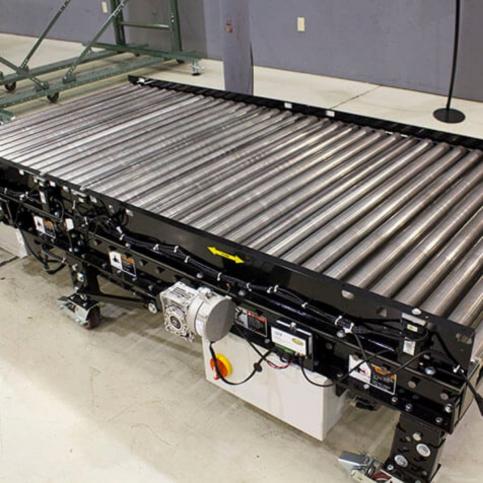Like most conveyor products, conveyor belts come in a wide variety meant to cater to different niches in all kinds of industries. Conveyor belts can generally be divided into two categories, general-purpose belts and specialty belts.
In order for your material handling solution to be fully effective, you will need to ensure that every part of your system has been carefully selected and is optimized for your applications. As such, choosing the right conveyor belt is crucial.
Here are four common types of conveyor belts:
1. PVC belts
PVC belts are typically incredibly lightweight yet durable. The material makes it so that they are wear-resistant, and they are also highly versatile and easy to use. PVC is non-absorbant, making it one of the more sanitary materials for conveyor belts. Because of this fluid resistance, it is typically used to convey foodstuffs and other sensitive products that are vulnerable to spillages such as pharmaceutical or beauty products.
2. Polyurethane belts
Polyurethane is resistant to both oil and abrasive substances. This material has a strong tear and impact resistance thanks to its elasticity. Its strength translates to weather resistance as well, being able to withstand humid conditions as well as cold temperatures. It is used in a wide variety of industries, with similar applications to PVC belts, but it is considered a longer-term investment as it tends to be costlier.
3. Plastic belts
In this case, plastic belts refer to a type of conveyor belt which is made up of molded thermoplastic pieces. These pieces are interlocked together in a chain-like design, creating some flexibility, and thus this belt is also referred to as a plastic interlocking belt. This type of belt provides a solid surface and thus, increased strength and durability. It is incredibly resistant to many different kinds of harmful substances. They can be found in a wide variety of industries, usually to transport pallets or bulkier products.
4. Metal belts
Metal belts are usually constructed of metal wiring that has been woven into specific patterns. These patterns make up the basis of the different types of metal belts, which include diamond mesh belts, trapezoid mesh belts, ball mesh belts, u-chain mesh belts and more. Depending on your specific needs, metal materials such as stainless steel, carbon steel and more can be used. Metal is an incredibly strong material and as such this type of conveyor belt is known for its temperature, wear and corrosion resistance. They can be used in annealing operations or to transport glass products, machinery and more.
Having the right kind of conveyor belt can be a game-changer for a business. Your conveyor’s performance will be optimized according to your needs and goals. When selecting a conveyor belt, there are a number of considerations to keep in mind; you can read more of our tips for selecting conveyor belts here.
Norpak Handling has been providing businesses throughout Canada with top-of-the-line conveyor belts and conveyor products for decades. For the best in the business, get in touch with us today to learn more about how we can provide material handling solutions that are tailored to your business.










